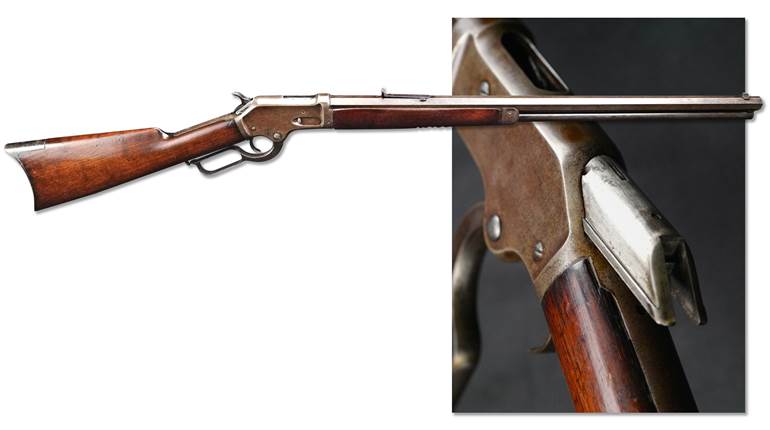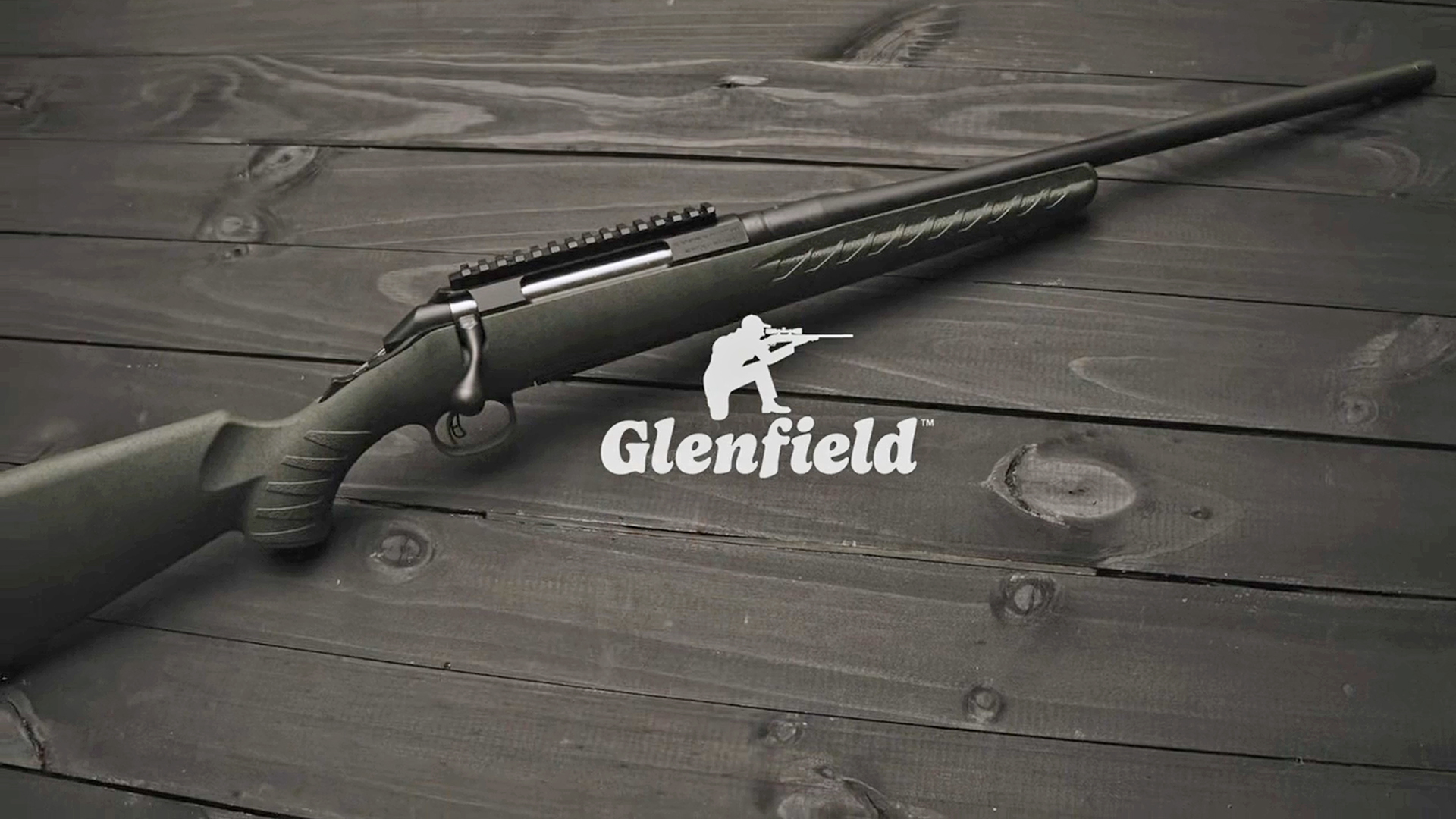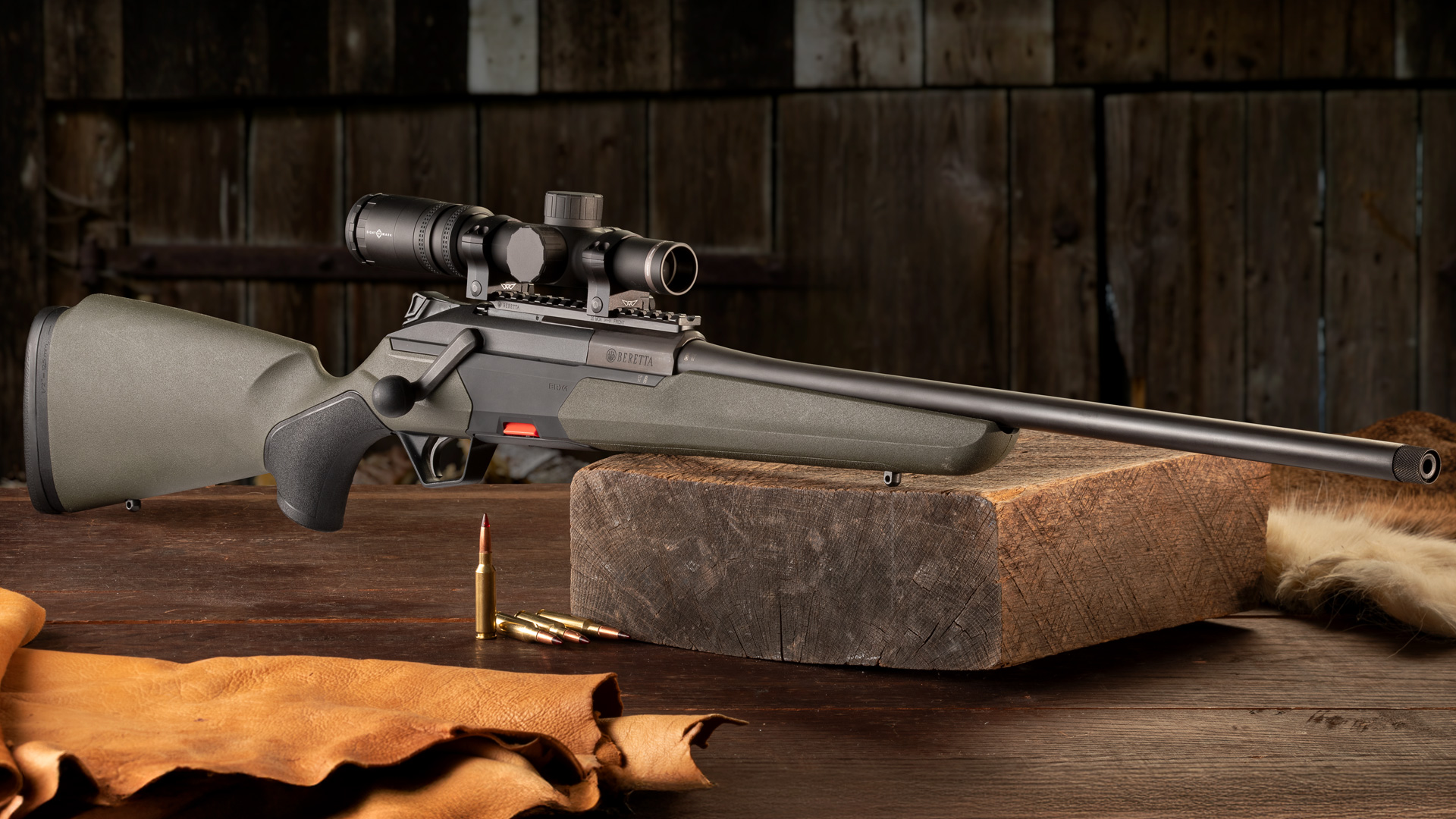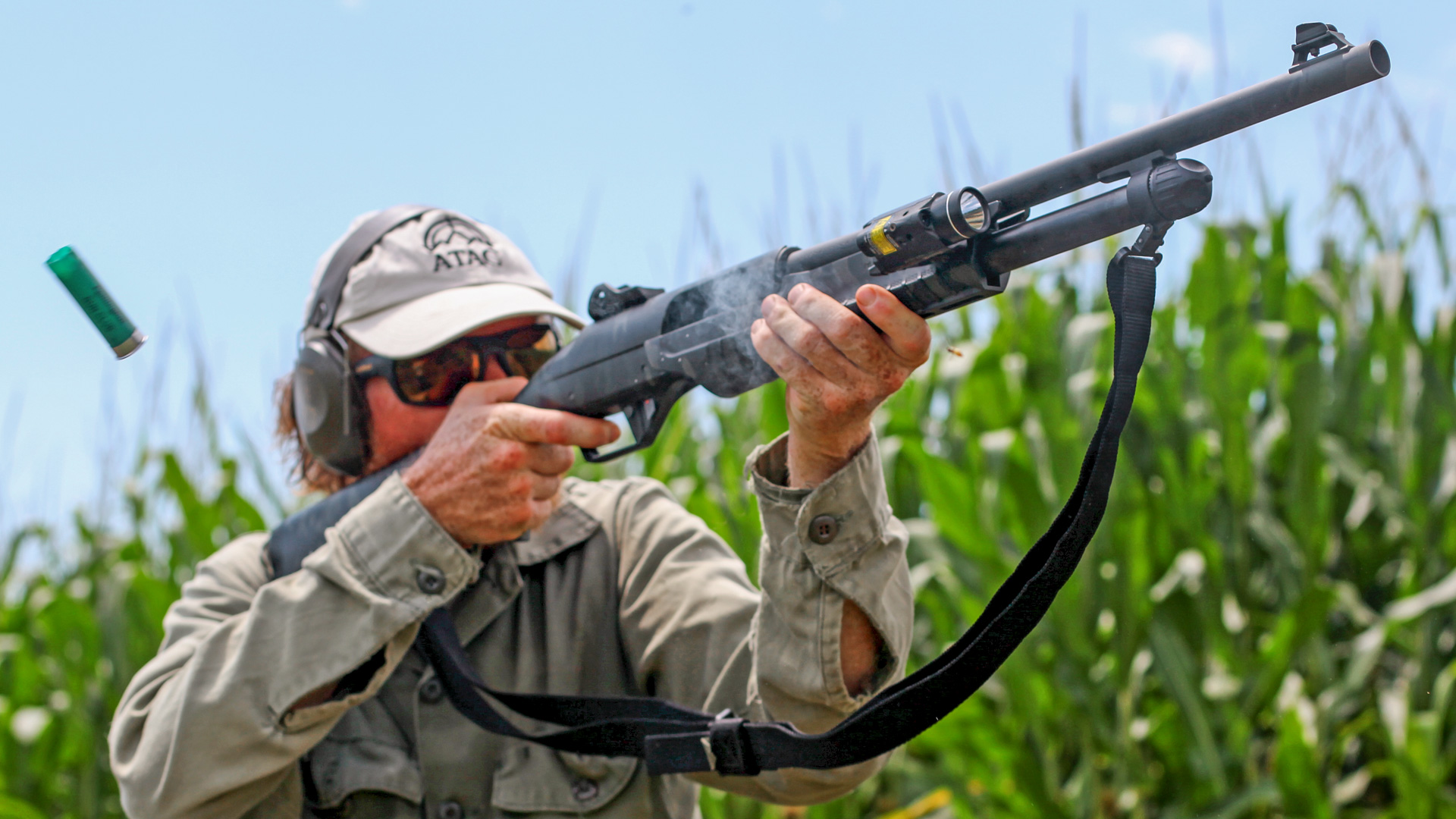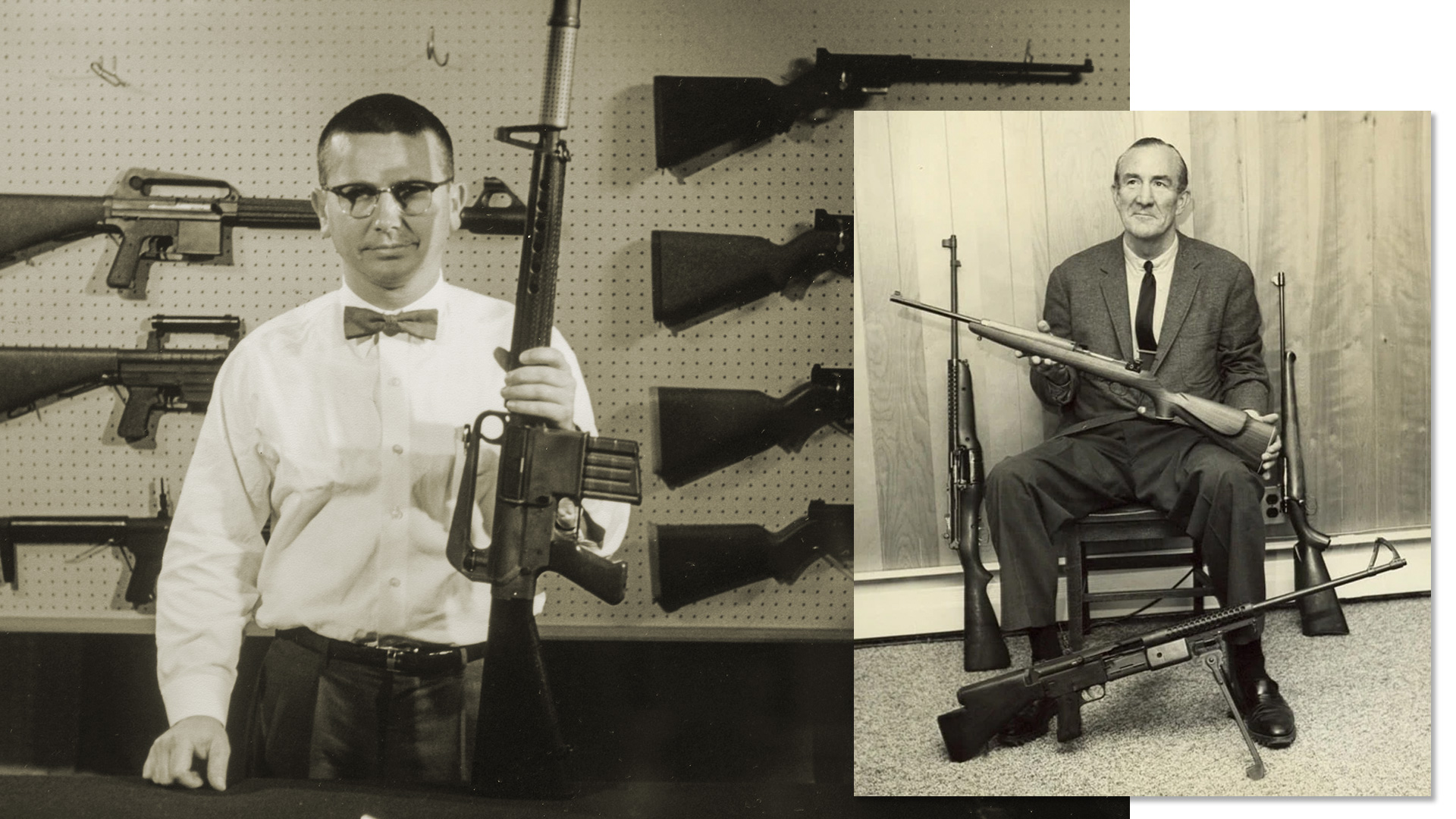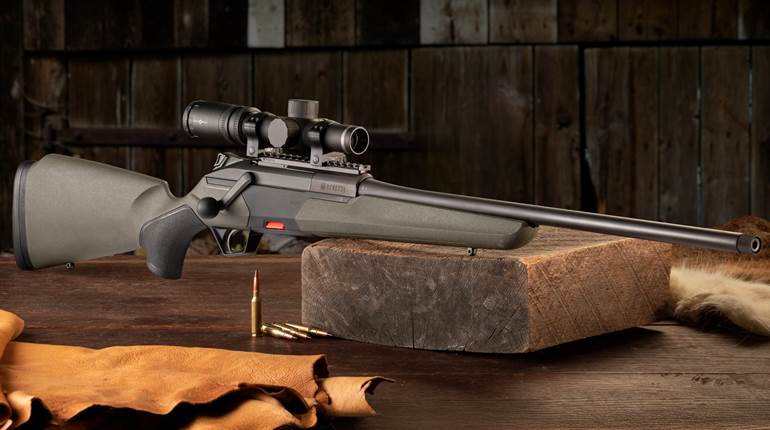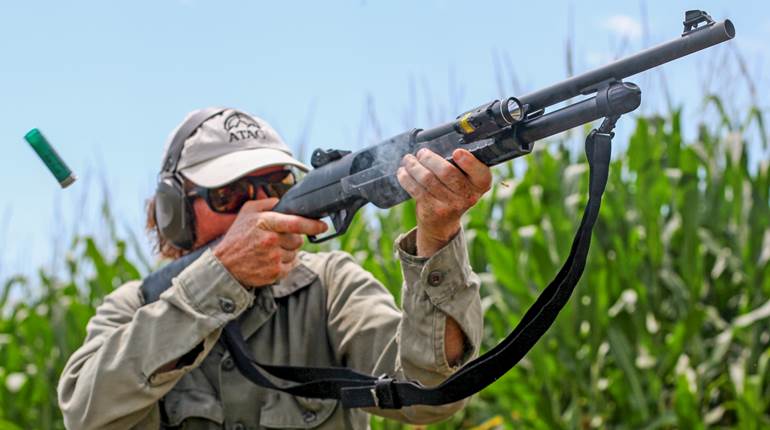
About a dozen years ago a friend told me that Crane Naval Station (USSOCOM) was looking into a quick-change barrel system for the M4, and he asked for my opinion. When I told him they ought to look at the system Eugene Stoner came up with, he asked what that was. Stoner used two push-pins to hold the receivers together and, instead of changing the barrel, one could instantly change out the entire upper component for another with a longer or shorter barrel, and it could even be pre-sighted in. Of course, I was having some fun with this, as my friend is extremely knowledgeable about firearms, but he replied, “You know, you’re right!”
Not long after that conversation, quick-change barrels for the AR platform did appear, the most notable being those from Lewis Machine & Tool and MGI. Others have followed, but replacing the upper receiver group of the AR arguably remains one of the best solutions, and the concept originated with Eugene Stoner himself.
In 1957, Colt bought the entire AR package from Eugene Stoner, who owned the patent on the direct gas “transfer” system of operation when he went to work for Armalite. This package included both the final version of the 7.62x51 mm NATO (.308 Win.) AR-10 and the AR-15 that fired the .223 Rem. cartridge designed by Armalite’s L. James Sullivan and Robert Fremont. Sullivan and Fremont also designed the AR-15 rifle for Stoner, and although Colt was preparing to manufacture the AR-10 for the 7.62x51 mm cartridge, the demand quickly changed for the smaller AR-15 in .223 (later the 5.56x45 mm NATO), and Colt shelved the idea of making any version of the AR-10. Now, more than a half-century later, that has changed in a very big way.
Called the LE901-16S Modular Carbine, Colt’s new 7.62x51 mm NATO is the result of an out-of-the-box concept that is a marriage of the AR-10 and AR-15 platforms with far-reaching implications. In a nutshell, the LE901-16S is an adaptive rifle using a highly modified and upgraded AR-15 lower receiver with an equally unique AR-10 magazine well. As such the rifle quickly converts to an M4-type carbine in 5.56x45 mm NATO.
The LE901-16S comes with a four-prong flash hider on a 16.1-inch, four-groove, 1:12-inch right-hand twist barrel. A barrel-mounted front sight is generally preferred and, along with a bayonet lug, the LE901’s elevation-adjustable folding front sight is part of the gas block, and is elevated under detent pressure, but requires pushing up the front lock to fold down. The rear sight is a flip-up dual aperture that is adjustable for windage using the tip of a bullet. A left side button is depressed to unlock it.
A Monolithic Upper Receiver
The Colt LE901-16S comes with a full-length uninterrupted M1913 top rail. The entire upper receiver is a strong, one-piece, monolithic assembly allowing for a free-floating barrel. The bottom handguard section with its rail is removable, but that is mainly for cleaning purposes. Since the LE901 is wisely of Stoner’s original direct-gas-transfer operation—an appropriate description coined by George Reynolds and an unnamed Colt engineer—there is no external piston system. Instead, the gas is transferred into the bolt carrier where it gently expands to operate the rifle, this as compared with the direct gas “impingement” system of the old Swedish Ljungman rifle.
In all AR-type rifles, the alloy upper receiver suffers to some degree as the bolt carrier rotates the steel bolt cam into alignment with its guide channel. This occurs as the head of the cam pin bumps the corner of the channel when the bolt unlocks. To prevent this in the LE901-16S, Colt has semi-permanently imbedded a hardened steel implant into the upper receiver, and has rounded the corners of the head of the cam pin.
Compared with the M4, the LE901’s bolt and components are massive, and its firing pin has a return spring to prevent inadvertent firing from kinetic energy. Most other aspects of the rifle are standard, except for its Vltor EMOD adjustable buttstock with dual battery compartments, three sling points and a rubber buttpad. The rifle also comes with two 20-round 7.62x51 mm NATO PMAGs from Magpul Industries.
While the front 2.68 inches of the LE901 carrier is 1.185 inches in diameter, the last 4.5 inches of the carrier measures 0.93 inches in diameter, the same as the end of the carrier of an AR-15. This section is also off center (lower) from the larger front portion. This means that the standard AR-15 hammer can be used and that the carrier will work in a standard AR-15 size recoil spring tube and will accommodate any mil-spec M4 type buttstock. On the bottom of the rear of the carrier are raised pads to prevent bolt carrier tilt.
Although the LE901-16S’ upper receiver group looks pretty much like other AR-10 variants, its longer than normal pivot pin hinge is quite noticeable, and the rifle’s lower receiver group is also full of surprises. This is not only because of its ambidextrous controls, but more so because of what is in front of these parts, and that is what sets this rifle apart from all others.
Rapid Caliber Conversion
Designed to use SR-25 or Magpul magazines, the LE901-16S’ magazine well angles down at its upper front to meet a cross hinge-pin hole for the .308 upper receiver’s pivot mount. The rifle’s front pivot hole is the same distance, front to back, as an AR-10, but it is about 0.75 inches lower to pivot on an axis different from that of the AR-15. No other AR-10 upper receiver group is compatible with the LE 901, but plenty else is.
After putting the safety “on,” removing the magazine and making sure the chamber is empty, removing the LE901’s 7.62x51 mm upper receiver in the normal manner allows one to replace it with a Colt LE6920CK 5.56x45 mm NATO upper receiver component by first adding the three necessary conversion parts. These include the AR-15 magazine well adapter and its captive cross pin, the M4 recoil spring and the standard AR-15 “H” buffer/guide.
To accomplish the conversion, simply attach the magazine well adapter to the 5.56 mm upper receiver’s front pivot hole by pushing adapter’s captive pin through the hole. Then insert the magazine well adapter into the top of the LE901’s magazine well and attach the upper receiver in the normal manner, pushing the lower hinge pin through the magazine well’s attachment hole. Then, with the hammer still cocked, close the upper and lower receiver and depress the rear locking pin. The converted rifle is ready to use as a 5.56x45 mm NATO rifle. The upper will now open just enough to remove the bolt group.
The average time needed to complete the conversion to or from either caliber should be less than two minutes. If you’re wondering if the conversion can be made using other makes and models of AR-15 type upper components, the answer is typically yes. With roughly 50 companies now offering “clones” of AR-15 rifles and carbines, not all are created equally. I was able to convert my sample Colt 7.62x51 mm LE901-16S to 5.56x45 mm using six different AR-15-type upper receiver groups with one being only slightly difficult. This can happen because not all AR-15 clones are made to mil-spec. Only the test results using the two Colt upper receiver components are shown here.
COLT LE901-16S
Manufacturer: Colt’s Mfg Co.; (800) 962-2658; www.coltsmfg.com
Mechanism Type: direct-gas-transfer-operated, semi-automatic center-fire rifle
Caliber: 7.62x51 mm NATO (.308 Win.)
Receiver: forged 7075-T6 aluminum
Barrel Length: 16.1" chrome-lined
Rifling: six-groove, 1:12" RH twist
Weight: 9 lbs., 8 ozs. (empty with removable rear sight)
Overall Length: 271⁄2" (stock extended), 341⁄4" (collapsed)
Magazine: 20-round-capacity detachable box
Trigger: single-stage; 7-lb., 9-oz. pull
Sights: folding protected post front adjustable for elevation; folding peep aperture rear adjustable for windage and elevation; full-length M1913 Picatinny rail on upper receiver
Stock: Vltor EMOD six-position, collapsible: length of pull, 10"-13"; drop at heel, 1/2"; drop at comb, 1/2"
Accessories: accepts AR-15 .223 Rem. upper components for conversion with magazine well adapter, buffer and recoil spring, plastic storage case, cable lock, owner’s manual, magazine
Suggested Retail Price: $2,129
Ambidextrous Controls
As with an ever-growing number of AR’s, the Colt LE901-16S comes with some controls that can be operated from either side. These are the magazine and bolt releases, but in the LE901’s case they are designed for right or left-handed users and not necessarily for both. That is to say that a right-handed shooter should still use the standard magazine release and bolt release, in my opinion. Using the standard AR magazine release requires that the operator remove his or her index finger from the trigger to do so—a good design feature.
The LE901’s left-side magazine release serves the same purpose for a left-handed user, so never the two should meet. In the case of the ambidextrous bolt release, while a right-handed shooter can use the one on the right side, it is just above the magazine release. Under stress it is very likely that the user will depress the magazine release instead of the bolt release. Because of this it is best for the right-handed operator to not use the bolt release lever on the right side of the receiver. Instead, either hit the standard left side release with your left palm, or better yet, pull back the charging handle and let it go to chamber that first round, as taught at Gunsite. The LE901 comes with only a left-side selector, but this can be replaced with an ambidextrous lever if preferred.
Caliber Friendly
Having been designed with law enforcement in mind, the Colt LE901-16S is chambered for the cartridge most used by such agencies for precision shooting requirements, the .308 Win. and its U.S. military equivalent, the 7.62x51 mm NATO cartridge. However, this rifle could just as easily be chambered for any of the cartridges in the “.308” family to include the .243 Win., 7 mm-08 Rem., .338 Federal and a few others. The LE901’s bolt would remain unchanged and its 20-round PMAG or SR-25 magazine should also require no modification. It goes without saying that after-market mil-spec upper components in 6.8x43 mm SPC, 7.62x39 mm, 5.45x39 mm, 6.5 Grendel and others could also be compatible as conversions with proper buffer/spring combinations, but there is more.
In the early 1990s, the Russians designed a new 9x39 mm infantry cartridge called the SP-5 and SP-6 firing bullets weighing 245 and 250 grains. Since both are used primarily in two suppressed selective-fire rifles, the muzzle velocity of the cartridges is 950 fps. Not a true 9 mm (0.355 inches), the Russian 9 mm measures 9.21 mm (0.362 inches) and uses a 7.62x39 mm parent cartridge case. Initially designed for Russian Special Forces troops, the 9x39 mm cartridge and the AK-style rifles that fire it are now issued to some elite Russian troops. While the USSOCOM was initially uninterested in this new cartridge, things have changed. Even though the advantages offered by the 9x39 mm round are great, the AK variant rifles that use it would likely be unwelcomed by U.S. operators who prefer M4-type operating controls. Enter the Colt LE901-16S.
Colt’s LE901-16S would seem an ideal candidate for the Russian 9x39 mm cartridge. With a new barrel and bolt installed, only a different magazine would be needed. Developing such a cartridge would be simple and the Colt LE901 is “troop friendly.” The rifle already exists in selective-fire for military use. An even simpler solution might be to develop a similar cartridge based on a shortened version of the 7.62x51 mm (.308) case. The LE901’s possibilities seem endless.
Accessories
In keeping with the LE901’s modular design, I outfitted it with a series of aftermarket components based on my personal preferences. Although it has quick-release, socket-type sling attachment points on either end of each side rail and on each side of the buttstock, I elected to mount an ACE Rail Sling Mount from DoubleStar on the 7.62x51 mm upper and attached a Blue Force Gear Victory Two-Point Sling. The Colt LE6920CK 5.56 mm upper component comes with a conventional side-mounted swivel. For optics, I mounted a Leupold MR/T 1.5-5X20 mm IR/30 mm in the new A.R.M.S. No. 72-LII scope mount with harmonic dampner on the 7.62x51 mm, and the new 4X 32 mm Browe Combat Optic on the 5.56 mm LE6920CK upper, both using A.R.M.S. Mounts. Just one of many 5.56 mm and 7.62 mm programmable optics from Browe, the BCO, uses high-quality optical glass and coatings and incorporates electronics that automatically adjust the reticle and turn it off after two hours of undetected movement.
For a bipod, I chose the light, but strong GripPod on the bottom handguard rail. On the GripPod’s special rail, I mounted a SureFire G2 Tactical Light in a Vltor QD Ring Mount. This requires the light to be operated with the thumb instead of the index finger. The RailGrip with Light Mount from RM Equipment works just as well, but does not have a bipod.
At The Range
With only brief practice, I was able to convert the Colt LE901-16S from 7.62x51 mm NATO to 5.56x45 mm NATO in one minute, using just the point of a bullet. All cross pins are captive and there are no small parts to lose. The main thing to remember is to replace the recoil spring and buffer with the appropriate one for each caliber. No other parts are interchangeable. The 7.62x51 mm spring is shorter and is stamped “308” and the M4 buffer is stamped with the usual “H.” Short-barreled or piston uppers may require a Colt “H2” buffer. The 5.56x45 mm NATO conversion magazine wells and buffer/spring groups will be offered separately.
All accuracy firing was done at 100 yards using a bipod or the Ultimate Precision Shooting Rest, from Carroll Targets, Inc. In the .308s, G.I. 7.62x51 mm NATO 150-grain ball provided bottom-rung accuracy while five bullets from several brands of ammunition averaged around 2 inches or less. Accuracy from the Colt LE6920CK upper component was not as good, especially using M855 5.56x45 mm NATO ammunition. It does not have a free-floating barrel and is much lighter in weight. A major culprit in accuracy issues was the LE901’s poor two-stage, heavy trigger. The proof of this was mounting the LE6920CK upper on a standard AR-15 lower with a Geissele Trigger. With that trigger the accuracy of the 5.56x45 mm improved by about 30 percent. Since the LE901 uses an AR-15 trigger, it is easily replaceable.
With the .308 Win. upper component, several failures to pick up a new cartridge or to lock back the bolt were experienced with commercial ammunition shooting bullets lighter than 150 grains. No other malfunctions were experienced with either caliber.
Although conversions for the AR platform are nothing new, there has never been anything like the Colt LE901-16S. This “out-of-the-box” design is now available from your nearest Colt dealer.
COLT LE6920CK CONVERSION
Manufacturer: Colt’s Mfg Co.; (800) 962-2658; www.coltsmfg.com
Mechanism Type: direct-gas-transfer-operated, semi-automatic center-fire rifle
Caliber: 5.56x45 mm NATO (.223 Rem.)
Receiver: forged 7075-T6 aluminum
Barrel Length: 16.1" chrome-lined
Rifling: six-groove, 1:7" RH twist
Weight: 7 lbs., 5 ozs. (empty with removable rear sight)
Overall Length: 271⁄2" (stock extended), 341⁄4" (collapsed)
Magazine: 30-round-capacity detachable box; accepts AR-15 magazines
Sights: protected post front adjustable for elevation, flip up aperture rear adjustable for windage and elevation; M1913 Picatinny rail on upper receiver
Stock: matte-black M4 handguards
Accessories: accepts AR-15 .223 Rem. upper components for conversion with magazine well adapter, buffer and recoil spring, plastic storage case, cable lock, owner’s manual, magazine
Suggested Retail Price: $685












